In the bustling world of property ownership and real estate investment, maintaining a safe and compliant infrastructure is paramount. But how can property owners, real estate investors, and building managers ensure that their buildings meet the necessary safety standards? The answer lies in regular building inspections. These inspections not only guarantee compliance with safety codes but also protect occupants and enhance property value. In this blog, we’ll explore the critical role building inspections play in safety compliance and how they can benefit you.
Understanding Building Codes and Their Importance
Building codes are the backbone of a safe and functional infrastructure. They set the standards for construction quality, energy efficiency, and fire safety. These codes are designed to protect property owners and occupants by ensuring that buildings are constructed and maintained properly. For property owners and investors, understanding these codes is essential. Compliance with building codes can prevent costly fines and lawsuits, ensuring the property’s long-term viability.
Property owners must stay informed about building codes because they can change over time. New technologies and materials may result in updates that impact current standards. Real estate investors, especially those focused on long-term investments, need to incorporate compliance into their strategies. A thorough understanding of building codes helps investors avoid potential pitfalls and ensures their properties remain attractive to prospective tenants.
The Role of Regular Inspections in Infrastructure Safety
Regular building inspections are a crucial tool in maintaining a safe and healthy infrastructure. Inspections identify issues before they become significant problems, allowing property owners to address them proactively. This proactive approach can save significant costs in repairs and potential liabilities. For building managers, regular inspections provide peace of mind, knowing that their property is safe for occupants.
Routine inspections create a cycle of improvement, where each inspection builds on the last, leading to continuous enhancement of building safety standards. Inspectors often use checklists tailored to specific property types, ensuring no detail is overlooked. By catching issues early, inspections help prevent damage to the property and safeguard occupants against potential hazards.
Common Areas Inspected and Their Importance
Building inspections cover a wide range of areas, each essential for comprehensive safety compliance. Structural components, such as foundations, walls, and roofs, are examined for integrity and potential vulnerabilities. Inspectors also assess electrical systems, plumbing, and HVAC systems to ensure they meet safety standards. Fire safety measures, including alarms and sprinklers, are thoroughly checked to ensure they function correctly in emergencies.
The thoroughness of these inspections is critical. Overlooking any component can lead to severe consequences, such as structural failures or electrical hazards. Property owners who prioritize comprehensive inspections can protect their investments and demonstrate responsibility towards their tenants. Real estate investors gain a competitive edge by ensuring their properties are in optimal condition, appealing to safety-conscious buyers.
Benefits of Compliance for Property Owners
Ensuring compliance with building codes offers numerous benefits for property owners and investors. One of the most significant advantages is avoiding fines and legal issues associated with non-compliance. Building inspections identify areas that need improvement, allowing property owners to make necessary adjustments before issues escalate.
Compliance with safety codes enhances property value. Properties that meet or exceed safety standards are more attractive to potential buyers and tenants. They convey a sense of trust and reliability, positioning the property as a secure investment. Building managers who prioritize inspections can also reduce insurance premiums, as insurers often offer discounts for well-maintained properties.
Scheduling and Conducting a Building Inspection
Scheduling and conducting a building inspection is a straightforward process that involves selecting qualified inspectors and setting a convenient time. Property owners should choose inspectors with experience and a solid reputation to ensure a thorough evaluation. Coordinating inspections with tenants and building managers minimizes disruptions and ensures that all stakeholders are informed.
During the inspection, the inspector will assess various building elements, taking notes and photographs to document findings. After the inspection, a detailed report is provided, outlining areas of concern and recommendations for improvement. Property owners and managers can use this report to prioritize repairs and maintenance, ensuring ongoing compliance with safety codes.
Technologies and Practices Improving Inspections
Advancements in technology have made building inspections more efficient and accurate. Drones equipped with cameras can access hard-to-reach areas, providing inspectors with a comprehensive view of the property. Thermal imaging detects issues like moisture intrusion and insulation gaps that may not be visible to the naked eye.
Software platforms streamline the inspection process, allowing inspectors to record findings easily and generate detailed reports. These tools enhance communication between inspectors, property owners, and building managers, ensuring everyone is on the same page. Investing in these technologies can improve the accuracy and efficiency of building inspections, leading to better outcomes for all parties involved.
Case Studies Highlighting Inspection Impact
Real-life examples illustrate the significant impact of building inspections. In one case, a property owner discovered structural weaknesses during an inspection, prompting immediate repairs that prevented a potential collapse. Another inspection identified faulty wiring that posed a fire risk, allowing the owner to replace the system and ensure occupant safety.
These case studies underscore the importance of regular inspections in maintaining safe and compliant buildings. By learning from these examples, property owners and investors can appreciate the value of inspections and make informed decisions to protect their investments.
Conclusion and Encouragement for Regular Inspections
Building inspections are an essential aspect of property ownership and management, providing peace of mind and ensuring compliance with safety codes. By understanding the importance of building codes, scheduling regular inspections, and leveraging technology, property owners and investors can protect their assets and enhance property value.
Encouraging regular inspections fosters a safer built environment, benefiting both property owners and occupants. For more information on how to integrate inspections into your property management strategy, contact industry professionals or explore additional resources. Together, we can create a safer and more sustainable future for our communities.
Our building Inspection Service Area in NZ
To Inspect your property book now online

